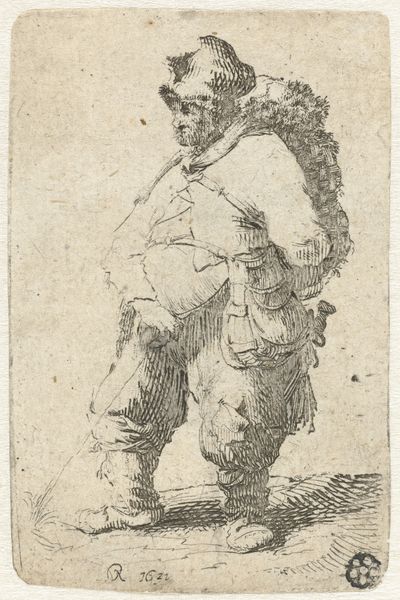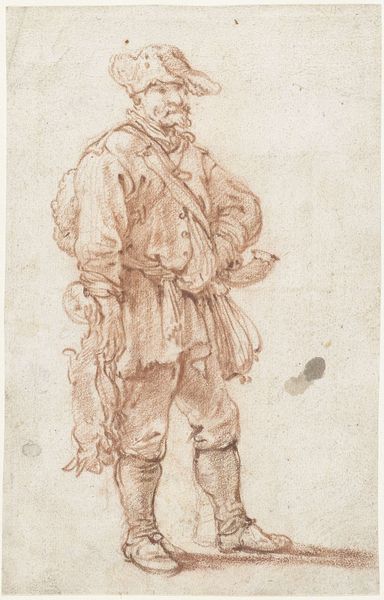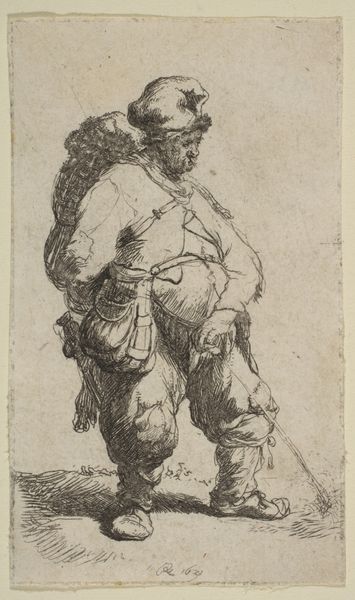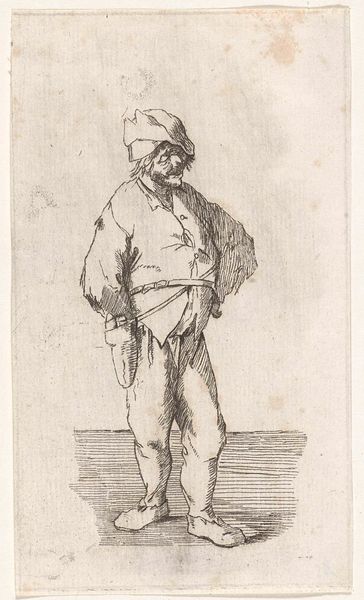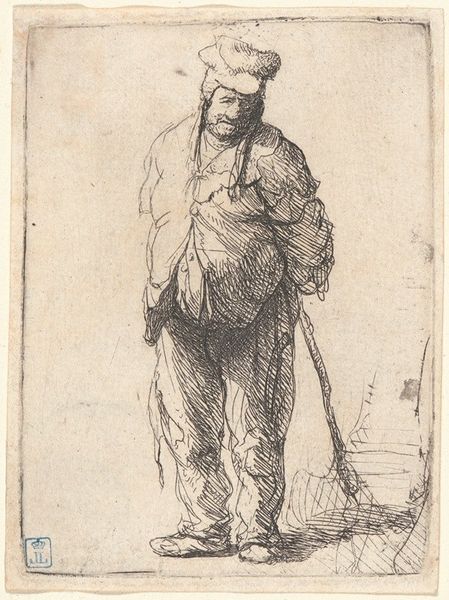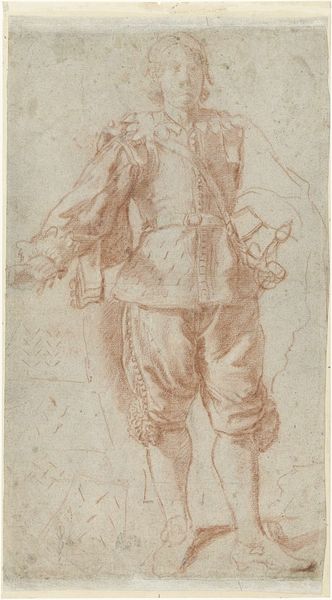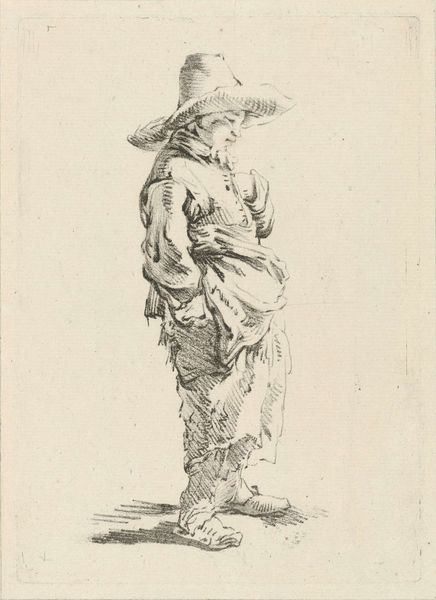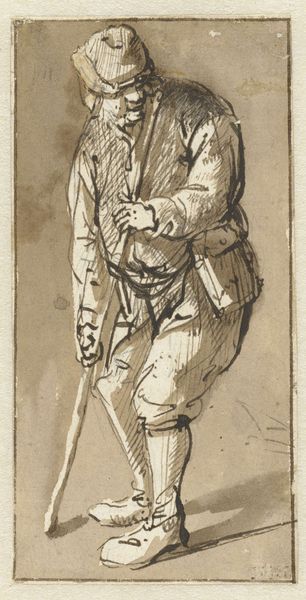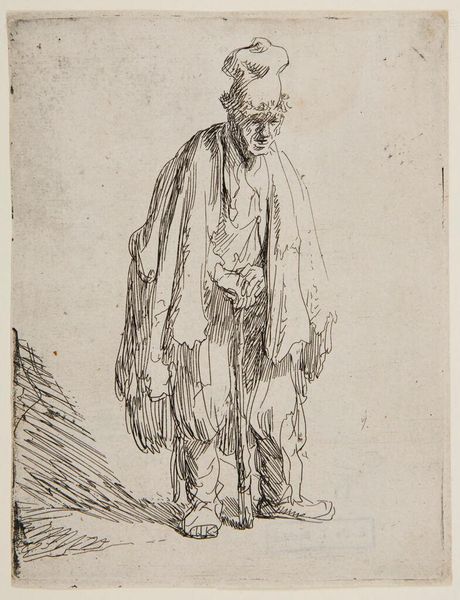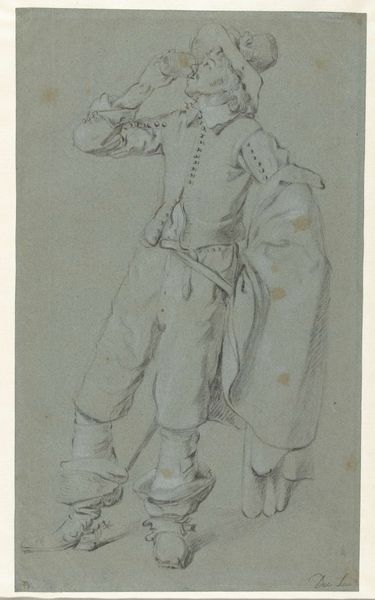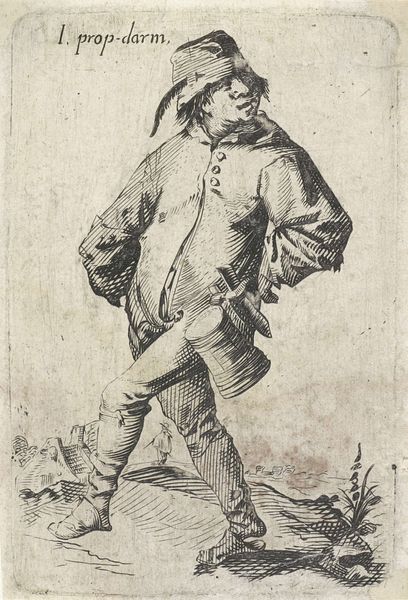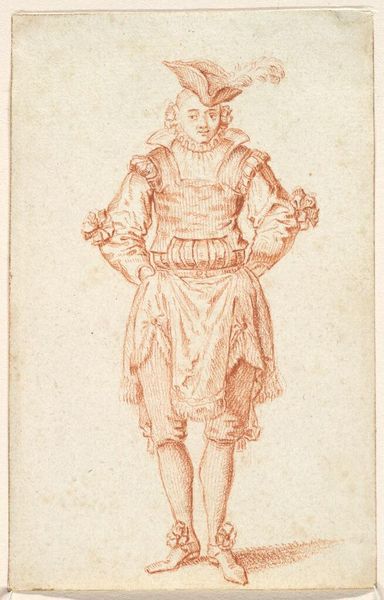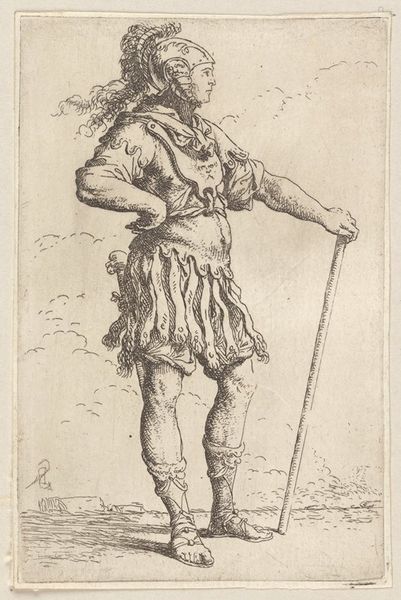
drawing, paper, ink
#
portrait
#
drawing
#
dutch-golden-age
#
figuration
#
paper
#
ink
#
genre-painting
Dimensions: height 118 mm, width 75 mm
Copyright: Rijks Museum: Open Domain
Editor: This is "A Dancing Peasant," an ink drawing on paper by Andries Both, dating back to the early 1630s. The loose linework gives the figure such a sense of joyous movement. I'm curious, what stands out to you when you look at this piece? Curator: The immediate charm is obvious, but as a historian, I consider the context. These genre scenes, depicting everyday life, were becoming increasingly popular, fueled by a burgeoning middle class eager to see themselves reflected in art. It’s interesting to consider the role this played in shaping Dutch national identity. What do you think about that? Editor: I hadn’t thought about it that way. I was more focused on the individual peasant and his obvious enjoyment. Curator: Exactly! It appears he is having fun. Now, what’s compelling is that Both, like many artists of his time, catered to a specific market. There's a definite romanticism of the lower classes happening here, isn’t there? A sanitized view. Is it genuine, or performative for an elite audience? Editor: I guess it could be a bit of both. It seems like people have always been interested in how others live, especially those outside of their own social circles. Do you think these depictions influenced social policy at all? Curator: That's a fascinating question! It's hard to pinpoint direct influence, but art absolutely contributed to shaping public perception and, ultimately, discourse around social classes. This image, with its carefree peasant, both perpetuated and perhaps challenged existing stereotypes. Considering who was commissioning and consuming such works is essential to understanding the politics of imagery. Editor: That gives me a lot to think about. It's so much more than just a picture of a dancing man. Curator: Indeed. Seeing art as a product of its time, shaped by socio-political forces, unveils deeper meanings and encourages critical engagement. I’ll remember to view my first impressions through the lens of what shapes these perceptions.
Comments
No comments
Be the first to comment and join the conversation on the ultimate creative platform.
